
Etna's Fireworks
Photograph by Carsten Peter
Italy's Mount Etna provides a vivid image of one of the birthplaces of igneous rock during a night eruption. Igneous rock forms when magma cools and solidifies. (Lava is magma that has reached the Earth's surface.) Etna also shows off the etymology of igneous, from the Latin word for fire.
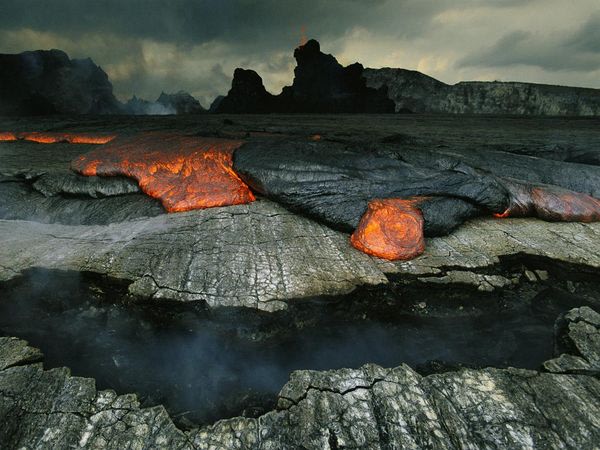
Oozing Lava Photograph by Frans Lanting
Oozing lava acts as a seal over fractured ground in Hawaii Volcanoes National Park. Once the lava from Kilauea Crater cools, it becomes known as igneous rock, since it formed from molten material. Geologists would also call it extrusive rock because it solidified on the Earth's surface.

Giant's Causeway
Photograph by Jim Richardson
Stepping stones into the sea, these basaltic columns of the Giant's Causeway in Northern Ireland formed from volcanic activity some 50 million to 60 million years ago. Rock formed from molten matter is known as igneous, and geologists classify igneous rock by its texture. You would need a microscope to see the grains in the 40,000-some basalt columns that form the Giant's Causeway.
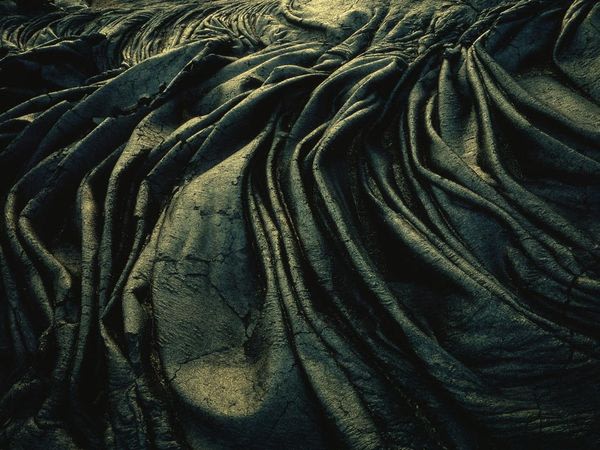
Ripples of Pahoehoe Photograph by Jeff Gnass
Cooled lava lies in icing-like ripples in Hawaii Volcanoes National Park. This image shows ropy pahoehoe, a type of basaltic lava that forms when solidifying lava meets an obstruction. Hot lava underneath the hardening crust continues to move it along, forming wrinkles in the process.
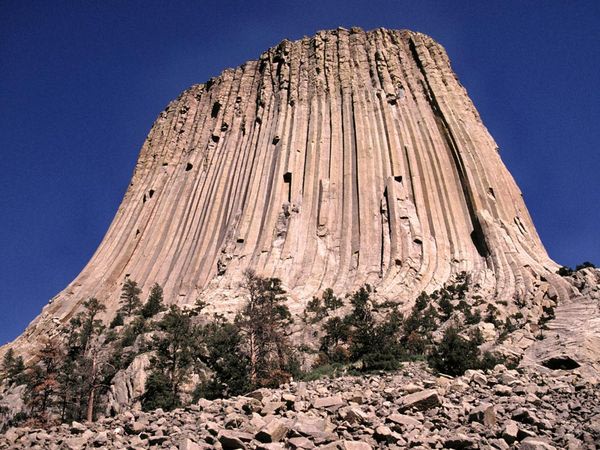
Devils Tower, Wyoming
Photograph by John G. Wilbanks
Known as an igneous intrusion, the 1,267-foot-tall (386-meter-tall) Devils Tower in Wyoming formed when molten rock intruded into the existing rocks. At first the formation wasn't visible, but as wind and water began to erode the sedimentary rock surrounding the tower faster than the harder igneous rock, Devils Tower was born.
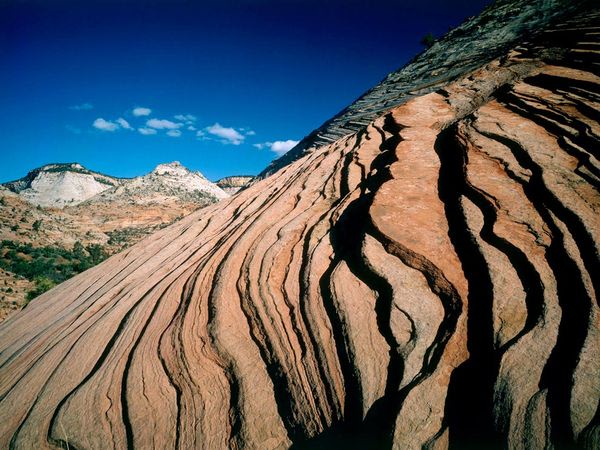
Sedimentary Slope
Photograph by Peter Arnold, Inc./Alamy
Erosion's artistic side can be seen in sedimentary rock layers in Zion National Park, Utah. After mud, gravel, and sand sediments were deposited and formed rock layers over time, uplift raised the region. Erosion then began to carve the magnificent cliffs and canyons seen today.
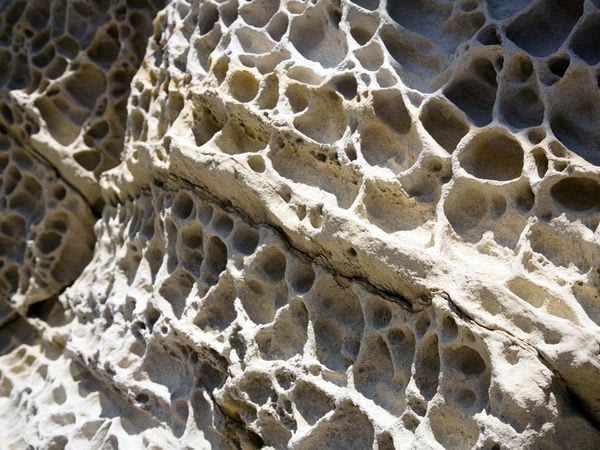
Sedimentary Honeycomb
Photograph by John McKenna/Alamy
This section of eroded sedimentary rock on Elgol Beach on the Island of Skye, Scotland, mimics bone. Erosion shaped its honeycombed appearance.
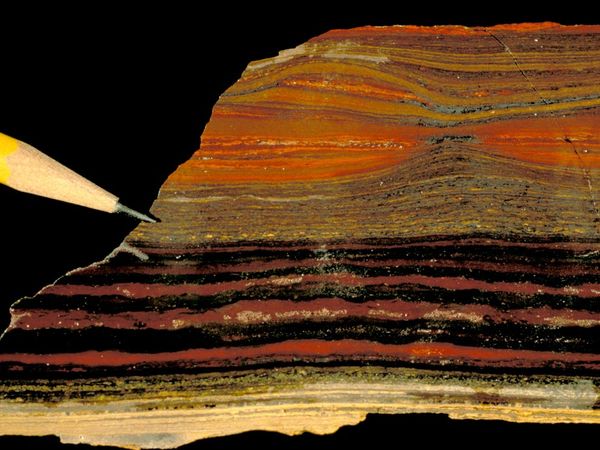
Wittenoom Iron Formation
Photograph by Society for Sedimentary Geology
A small section of the Wittenoom Iron Formation in Western Australia highlights how sedimentary rocks are laid down in layers. The sediments in this photo curve near the ends of chert pods. Chert—a silica-based rock—occurs in limestone. Paleontologists know chert as a good place to look for fossils.
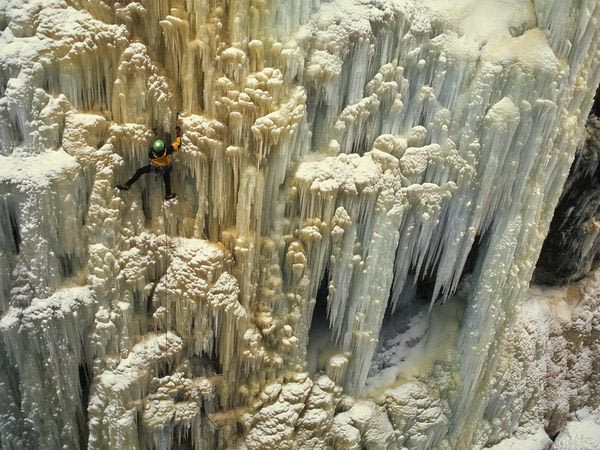
Limestone and Icicles
Photograph by Bill Hatcher
Climbing ice-encrusted limestone is careful work in Box Canyon in Ouray, Colorado. During the summer a 285-foot (87-meter) waterfall awes visitors, but in the winter ice and climbing enthusiasts take over.

Checkerboard Mesa
Photograph by Larry Fellows
Horizontal furrows and vertical fractures in the bedrock give Checkerboard Mesa in Utah's Zion National Park its name. Erosion shaped the Navajo sandstone of the mesa on the edge of the Colorado Plateau, near the east entrance of the park
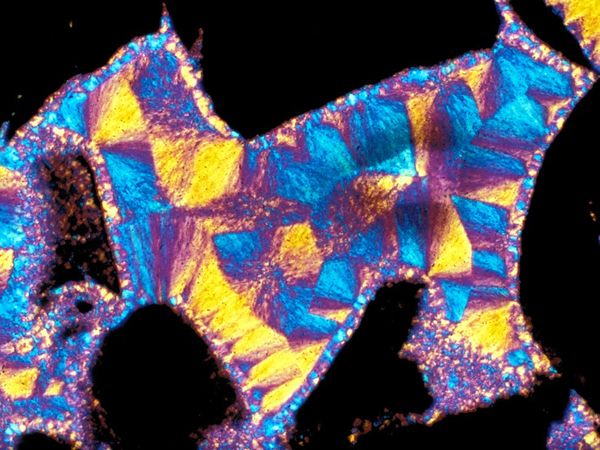
Chert Granules
Photograph by Society of Economic Paleontologists and Mineralogists
A single pore between chert granules in a rock formation in Ontario Province, Canada, shows off its colors in this photomicrograph. This rock contained chalcedonic cement before it underwent diagenesis, a process where low temperatures and low pressures alter the content of sediments before they finally lithify, or turn into rock.
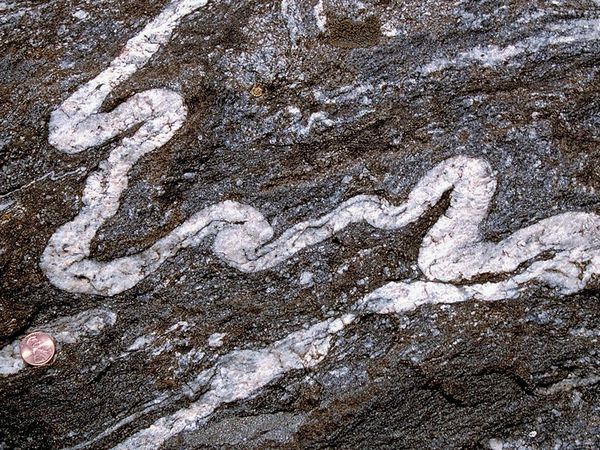
White Rock
Photograph by Marli Miller, University of Oregon
A river of white rock snakes within its darker surroundings, providing evidence that it had a greater viscosity than the darker rock. Geologists refer to this kind of formation as ptygmatic folding. A penny shows the scale of the size of this folding, which is highly irregular
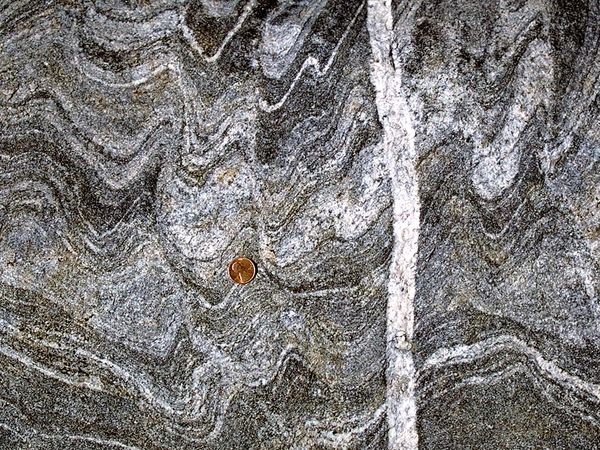
Gneiss Lines
Photograph by Marli Miller, University of Oregon
As if an avant-garde painting, younger white rock intrudes in a tapestry of gneiss. Since the white rock doesn't show the same evidence of folding as the surrounding gneiss, it offers proof that it is a younger intrusion. Gneiss, a metamorphic rock, can be commonly found in Precambrian areas. Note the penny for scale.
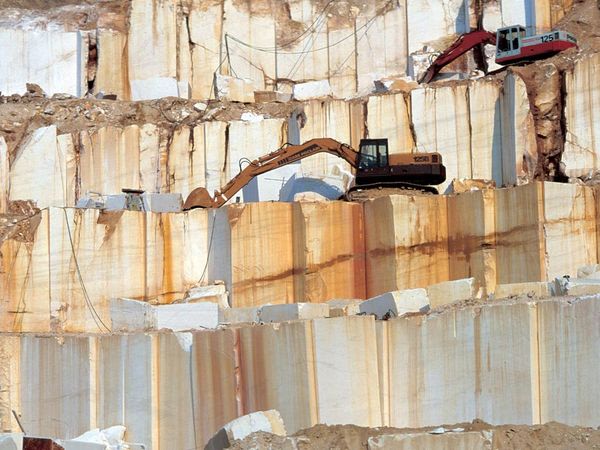
Marble Quarry
Photograph by CuboImages srl/Alamy
Bulldozers work in a marble quarry in Thásos, Greece. The Earth's heat and pressure alter limestone into marble, which can range in color from black to white. The ancient Greeks recognized marble's durability, using it to build the Parthenon in Athens. Marble, a metamorphic rock, forms when limestone re-crystallizes.
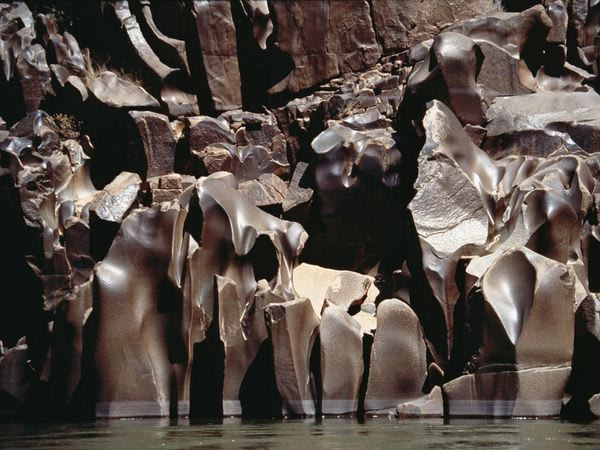
Schist Rock Formations
Photograph by Peter Essick
The Colorado River has eroded these schist formations into fudge-like shapes and shades. Schist, a metamorphic rock, contains mineral crystals that can be seen by the naked eye.
No comments:
Post a Comment